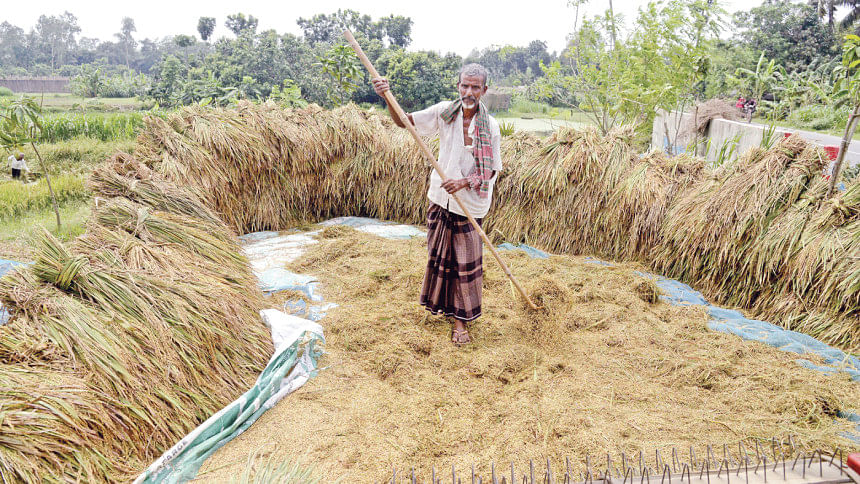FAO predicts favourable Boro harvests

Production prospects for Boro paddy, the principal rice crop in Bangladesh, remain favourable as harvests are expected to conclude this month.
The hope is based on good weather and an increase in planting by farmers in response to high domestic prices, according to a report released by the Food and Agriculture Organization (FAO) yesterday.
The UN agency said the area planted for the 2025 Boro paddy crop, which is mostly irrigated and accounts for about 55 percent of the annual output, was estimated to be above the five-year average.
Citing satellite imagery, it said crop conditions prior to the onset of harvests last April were above average across most parts of the country, supported by favourable weather conditions.
"Increased adoption of high-yielding seed varieties contributed to boosting yields," the FAO said in its Global Information and Early Warning System (GIEWS), focusing on Bangladesh's food and agriculture.
The forecast comes at a time when the retail price of coarse rice, the benchmark variety used to track prices, has remained at over Tk 52 per kilogramme for six consecutive months since November.
The UN agency said domestic prices of rice in Dhaka, the capital city, increased steadily between October 2023 and January 2025 due to inflationary pressure and increases in the costs of production, milling, and transportation.
Since February 2025, prices have remained stable and, as of April 2025, were 8 percent higher than their levels a year earlier, even though paddy production was estimated at an above-average 6.02 crore tonnes in 2024.
This was due to large plantings and bumper yields despite crop losses caused by heavy rains and floods between May and August 2024 and the passing of Cyclone Remal in late July 2024.
Bangladesh's average paddy production was estimated at 5.71 crore tonnes over the five years to 2023, according to the FAO.
The agency said the Aus paddy crop, which accounts for about 10 percent of the annual output, is currently at the flowering and grain-filling stages, and its conditions are generally favourable in key production areas in the north and south.
Planting of the 2025 Aman paddy crop, which accounts for about 35 percent of the annual output, is underway with favourable soil moisture conditions, and harvesting is expected to start in October, it added.
Imports of rice are also predicted to increase this calendar year to 12 lakh tonnes, up from 175,000 tonnes in 2024.
Citing fiscal year 2024–25 ending this June, the UN agency forecasts Bangladesh's cereal import requirements at 90 lakh tonnes.
The amount is near the five-year average and well above the unusually low level in 2023–24, when the country's import capacity was limited by low foreign currency reserves, it said.
Bangladesh's cereal imports consist mostly of wheat, which covers 80 percent of its consumption needs, plus minor quantities of rice and maize.
The FAO predicts the country's wheat imports at a near-average 67 lakh tonnes and maize at an above-average 14 lakh tonnes, driven by steady demand for feed from the livestock and fishing industries in FY25.

 For all latest news, follow The Daily Star's Google News channel.
For all latest news, follow The Daily Star's Google News channel. 



Comments